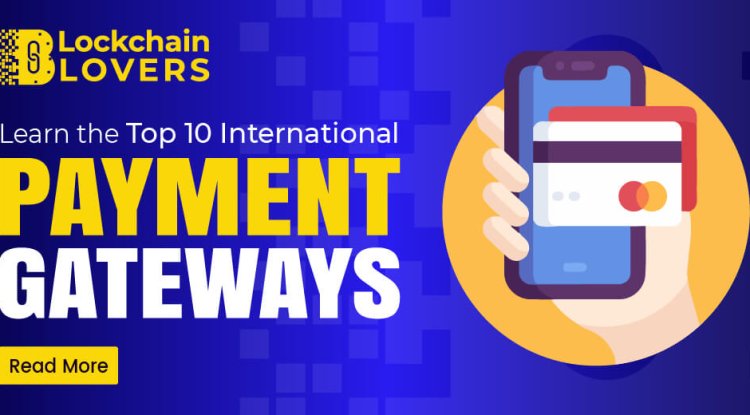Exploring Decentralization in Blockchain Technology
Blockchain is unique since it is totally decentralized, however this kind of data can be stored in any ordinary database. A blockchain database is similar to an Excel spreadsheet or a bank database, is kept in multiple identical copies on multiple computers spread out over a network rather than being managed in one location by a centralized administrator.

Blockchain is unique since it is totally decentralized, however this kind of data can be stored in any ordinary database. A blockchain database is similar to an Excel spreadsheet or a bank database, is kept in multiple identical copies on multiple computers spread out over a network rather than being managed in one location by a centralized administrator. These one-off computers are called nodes.
What is decentralization?
Decentralization is the division of power, data, and tasks rather than their concentration in a single organization. The phrase is used across a wide range of industries and enterprises, such as information technology, retail, and government. It also describes a system where data can flow across multiple channels. An illustration of this would be if someone attempted to alter a record at one database instance, and the other nodes prevented them from doing so. This ensures that no single node in the network may alter the data it contains. A blockchain allows data from a database to be distributed among several network nodes, or computers or other devices running blockchain software, at various locations. This preserves the data's integrity and adds redundancy. The information and history are irreversible because of this distribution and the encrypted proof that work was finished, much like cryptocurrency transactions. Other types of data that can be stored on a blockchain include contracts, state IDs, and the products that a company owns. It may keep a record of all the cryptocurrency transactions, for instance.
How does decentralization work in blockchain?
Blocks of data in a blockchain are used to record transactions and verify the legitimacy of later blocks. Users of Bitcoin are able to add new blocks to the blockchain through the Proof-of-Work (PoW) process. A new block can be added to the public blockchain, which is available to all users, by providing Proof of Work for a transaction. Above all, the internet and the range of digital services that are accessible on it are owned by big businesses. This is where the concept of blockchain decentralization comes into play, helping to define a major change in the path of technology. The ensuing discussion aims to explain decentralization and the substantial value advantages it offers. Moreover, there are numerous methods by which you may learn about how decentralization operates.
Blockchain decentralization types
Typically, a blockchain displays one of the following degrees of decentralization:
• Completely centralized. totally under the direction and supervision of one central authority.
• In part-decentralized. managed and under the jurisdiction of several entities.
• Completely deregulated. No central authority or intermediaries are needed to oversee or operate the network.
Decentralization has various subcategories, some of which are as follows:
The goal of physical decentralization is to distribute blockchain servers as widely as possible geographically so that no one entity will control the network and that the network will remain unaffected in the event that physical servers are lost for any reason.
Specifically, transactional decentralization aims to increase B2B networks' transparency and efficiency. Unchangeable ledgers and smart contracts can be employed in a decentralized transactional system to create a consensus-based, more secure environment for transaction execution, verification, and recordkeeping.
The number of persons or groups in control of the system is more important to political decentralization than the total number of servers. The less decentralized a network is, the fewer individuals or institutions in control of it.
What are Decentralization's Benefits and Drawbacks
Decentralization's benefits
The Burden Distribution of the Executive
The decentralized structure allows the executive to share his burden with those at a lower level, freeing him up to focus on more critical and urgent tasks that require his complete attention. All of the organization's employees benefit from this as it improves understanding, speeds up work, fosters a friendly environment, and builds teamwork.
Anyone assigned this responsibility understands that it holds authority and power, therefore they strive to perform it to the best of their abilities. They ensure greater production and efficiency by approaching their task with such vigilance and enthusiasm.
The Expansion Facility
Senior management employees may focus on innovative ideas and methods of thinking because of the decentralized structure, which frees them up from mundane tasks. This enables the company to continue expanding. This suggests that it won't be too hard to achieve plane expansion. Modern business setups have grown as a direct result of their dispersed organizational architecture.
Drawbacks of Decentralization
Issues with the Scheduling
Highly competent people can be supervised by highly trained specialists thanks to decentralization. It's conceivable that these individuals won't be able to come to an agreement because of how brittle their assets are.
Decentralization exacerbates the problem of collaboration between units.
Not all situations allow for decentralized systems. Broad strikes and other external variables hinder this.
Based on the assumption that administrators with large salaries ought to be selected for the position, it computes the authoritative costs.
Closing Remarks
Decentralization is valuable for reasons other than bitcoin technology. Users may understand the advantages of decentralization and realize more fully how important it is thanks to blockchain technology. Summing up, the answer to the question "What is decentralization in blockchain?" would cover more than just the distributed nature of blockchain.
By giving consumers back control and power, decentralization can act as the cornerstone of web 3. With the huge influence that innovative blockchain solutions are having on numerous sectors, the need for decentralization is more important than ever. Acquire additional knowledge about blockchain technology and decentralization immediately.
What's Your Reaction?





















